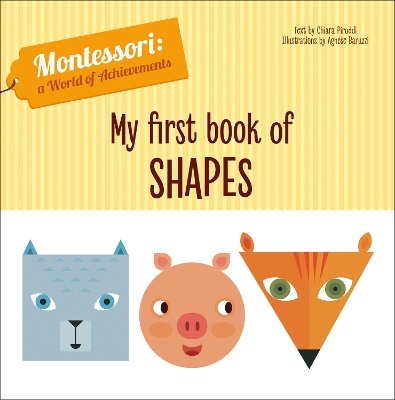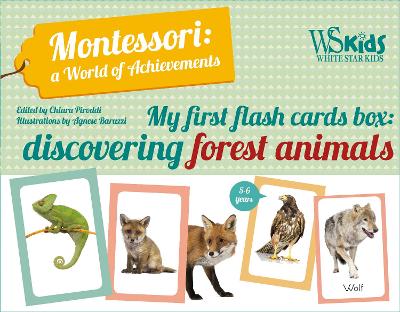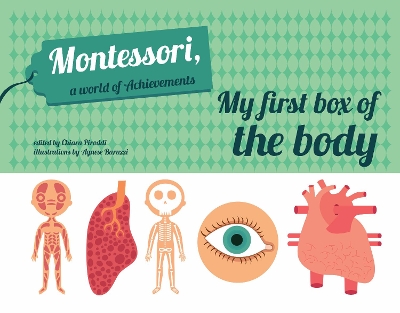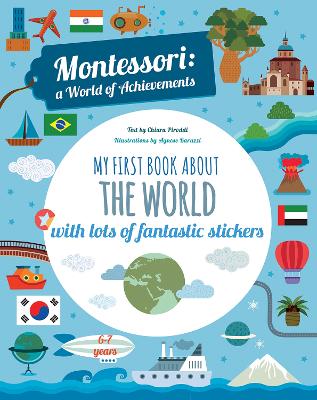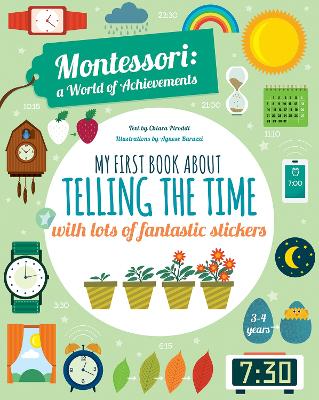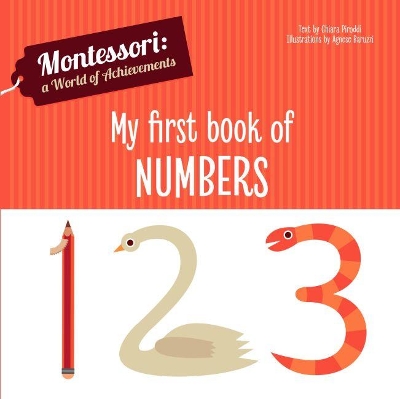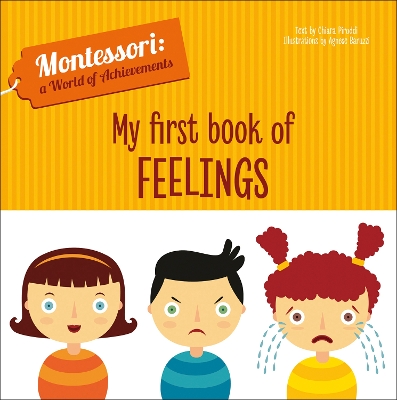Montessori World of Achievements
8 total works
The idea behind the boardbook collection was to attract even the youngest readers (from as young as 3 years old); to encourage them to discover subjects and areas that interest them (nature, animals, shapes, etc.) and to help them classify the things that surround them. The series is comprised of ten little books. Two are instructive, teaching shapes and numbers; five are exploratory and describe settings that are fun to discover (farm animals, wild animals, the backyard and its insects, the vegetable garden) and three are short stories about the experience of birth in nature (the birth of a little bird, of a butterfly and of a flower). Narration becomes the background for the text since touching and picture reading are the primary means of interpretation. A guiding character accompanies the child throughout each developing story until the end, where there is a summary of all the characters introduced in the book. Consistent with the Montessori approach, the child is encouraged to interact independently with his or her book. For example, in some cases, the child is asked to use a finger to trace the outline of a shape and notice its characteristics (round, sharp-edged, jagged, etc.). In others, he or she is asked to use a finger to follow a path in order to discover hidden characters and learn to associate them with their most distinctive features (the lion's tail, the rabbit's ears, the colours of vegetables, etc.). Ages: 3 plus
My First Flash Cards Box: Discovering Forest Animals - Montessori World of Achievements
by Chiara Piroddi
Using the Montessori approach, the process of handwriting can begin quite early using a variety of activities that include manual exercises and fine motor skills training with suggestions for activities to do at home using materials such as flour or sand so that the manual exercises are done with constantly differing substances.
Includes 8 pages of stickers.
My First Box of the Body - Montessori World of Achievements
by Chiara Piroddi
This series is a collection of texts for children which contains playing activities aimed to encouraging the development of the main cognitive skills following the Montessori method and its most typical topics. The contents follow a progressive complexity to challenge the children to complete various tasks with great results all by themselves. My First Book About the World. Using the Montessori concept of nesting elements where smaller elements are contained in progressively bigger ones, the child can see the logical sequence of their surroundings: to the house, city, country, continent and planet that they calls home. At the end of the book, the world is presented from a wider perspective, space, and from there, the world becomes the Planet Earth. Ages: 6 plus
This series is a collection of texts for children which contains playing activities aimed to encouraging the development of the main cognitive skills following the Montessori method and its most typical topics. The contents follow a progressive complexity to challenge the children to complete various tasks with great results all by themselves. My First Book About Telling Time is dedicated to 3 to 4 year old children. It leads them through a series of concepts about the passing of time using a variety of fun games. The goal of the book is to stimulate the development of temporal coordinates through phase changes, physical changes and the evolution of moments throughout the day. Ages: 3 plus
My First Book of Numbers (Montessori World of Achievements)
by Chiara Piroddi
The series is comprised of ten little books. Two are instructive, teaching shapes and numbers; five are exploratory and describe settings that are fun to discover (farm animals, wild animals, the backyard and its insects, the vegetable garden) and three are short stories about the experience of birth in nature (the birth of a little bird, of a butterfly and of a flower).
Narration becomes the background for the text since touching and picture readings are the primary means of interpretation. A guiding character accompanies the child throughout each developing story until the end, where there is a summary of all the characters introduced in the book.
Consistent with the Montessori approach, the child is encouraged to interact independently with his or her book. For example, in some cases, the child is asked to use a finger to trace the outline of a shape and notice its characteristics (round, sharp-edged, jagged, etc.). In others, he or she is asked to use a finger to follow a path in order to discover hidden characters and learn to associate them with their most distinctive features (the lion’s tail, the rabbit’s ears, the colours of vegetables, etc.).
The idea behind the boardbook collection was to attract even the youngest readers (from as young as 3 years old); to encourage them to discover subjects and areas that interest them (nature, animals, shapes, etc.) and to help them classify the things that surround them. The series is comprised of ten little books. Two are instructive, teaching shapes and numbers; five are exploratory and describe settings that are fun to discover (farm animals, wild animals, the backyard and its insects, the vegetable garden) and three are short stories about the experience of birth in nature (the birth of a little bird, of a butterfly and of a flower). Narration becomes the background for the text since touching and picture reading are the primary means of interpretation. A guiding character accompanies the child throughout each developing story until the end, where there is a summary of all the characters introduced in the book. Consistent with the Montessori approach, the child is encouraged to interact independently with his or her book. For example, in some cases, the child is asked to use a finger to trace the outline of a shape and notice its characteristics (round, sharp-edged, jagged, etc.). In others, he or she is asked to use a finger to follow a path in order to discover hidden characters and learn to associate them with their most distinctive features (the lion's tail, the rabbit's ears, the colours of vegetables, etc.). Ages 3 plus
